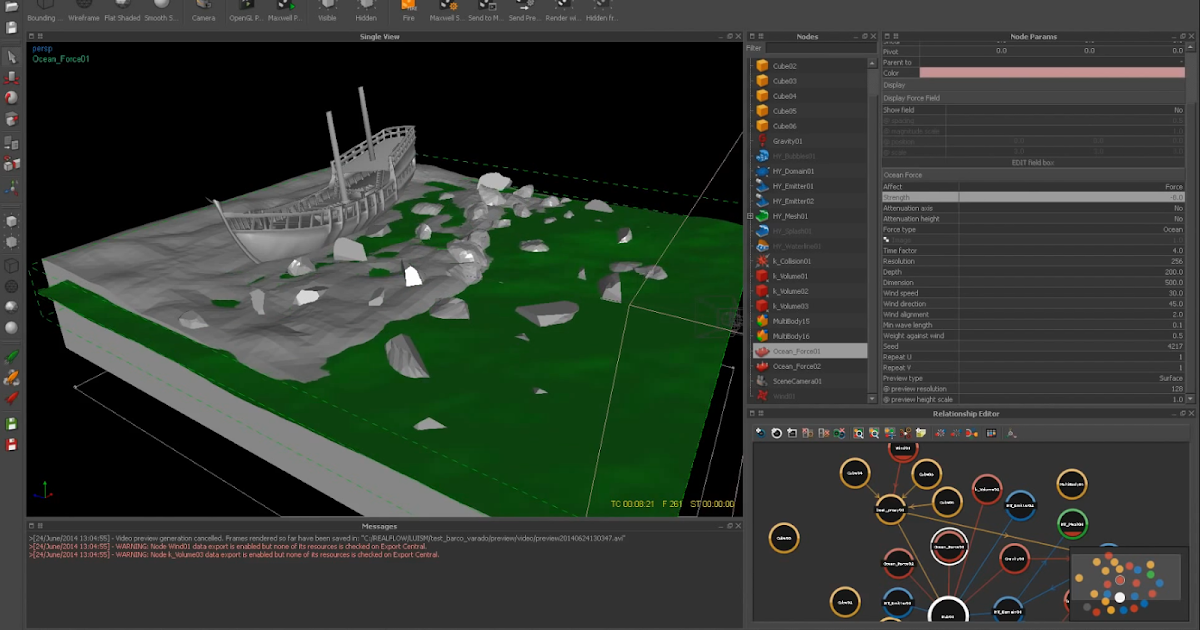
There, they form drops and splashes and fill the object. Click on the “Simulate” button and watch the particles, how they become accelerated and fall into the vase. Now you already have everything for your first simulation. The force acts everywhere in the scene with exactly the same strength and you can place the emitter at any point in the scene without changing its properties. This means that it is not restricted to a certain area or volume. “ Gravity” adds a force to the scene that acts globally. This node can be found in the "Daemons" shelf: Finally, go to:Ĭircle01 > Node Params > Particles > Resolution > 25.0 Click on the small yellow cube in the middle of the axis and drag the mouse until the "Sx", "Sy" and "Sz" parameters in the upper left viewport caption show a value around 0.4.

With the T key it is possible to scale the emitter. In the upper left corner of the viewport you can see the current rotation. Click on the red circle (= X) and drag the mouse until the emitter has a rotation of approximately 45 degrees. Again, each circle represents one direction in 3D space: X, Y and Z. Once this tool is active, the emitter shows three circles. Click on the axis, pointing upwards, and move the node roughly 1 grid unit. Now you can see three axis for each spatial direction. The emitter can easily be repositioned with the “Move” tool that is activated with the W key. Change the view to “Front” with the 2 key. To make everything a little more interesting, the emitter will be moved upwards and rotated. The emitter's viewport symbol shows an arrow pointing downwards – this arrow indicates the direction of emission. A list with RealFlow's emitters can be found in the "Liquid - Particles" shelf. The second node is a particle emitter and this will be the fluid source. Position and scale of the newly created objects are fine and we do not have to change anything. To add the desired node, please look for this icon in the "Geometry" shelf and click on it:Īfter you have chosen the “Vase” object you will recognize that it has been added to the viewport, but also to the “Nodes” window and the “Relationship Editor”. A click on these symbols either triggers an action or creates a simulation element, also called “node”. The first object will be the vase: in the upper part of the program's interface you can see tabs with different icons. In this basic scene a vase-shaped object should be filled with fluid particles. We want to go through these very first steps with you. You can start to add emitters, objects and forces immediately and start your first simulation. “Vase Filling”, and click on “CREATE A NEW PROJECT”, or directly define a new path to a custom directory and then create the project. You first have to either close the window or define/open a project.
#Realflow tutorial 2014 windows
As long as the "Project Management" window is visible, it is not possible to access the underlying windows or panels. To open a file from this list, simply double-click on the desired project. “Full path” displays the entire path to your scene including the previously entered project name.Ī scene can be opened with the appropriate button on the upper right or via the “Recent projects” list. If you did not specify an alternative path, everything is stored under the program’s default location, which is printed one line below. All these folders are grouped under the project’s main directory, carrying the name you have entered before. By clicking on the “CREATE A NEW PROJECT” button, RealFlow generates a set of different folders, where the simulation files will be stored later. RealFlow’s "Project Manager" window during startup.įirst of all you must enter a “Project name”. The “Preferences” also provide options to adapt RealFlow to your favourite 3D platform in terms of axis setup and scale. This specific path can be changed permanently under "Preferences", but for the very first project it is currently not necessary to alter this path. By default, all new files are created in a certain directory. This is RealFlow’s "Project Manager" and contains functions to create a new scene or open an existing file.
#Realflow tutorial 2014 how to
New customers should first read through this section to learn how to get started with the program and some of its numerous possibilities.Īfter RealFlow has launched, a window appears. Experienced users will surely get along easily.

Now it is finally time to start RealFlow.


 0 kommentar(er)
0 kommentar(er)
